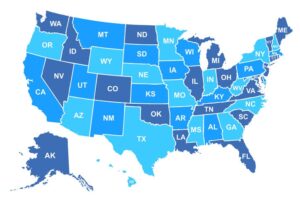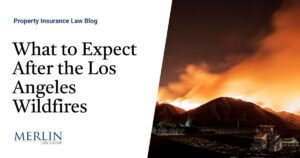Plenty of reinsurance questions in a more volatile world

Reinsurers are seeking more stability in a volatile environment that has changed significantly in recent times, with uncertain implications for pricing and capacity, a report from AM Best indicates.
The reinsurance market will be put under the microscope next month, when the Rendez-Vous de September is due to return as an in-person event in Monaco from September 10-14, but AM Best’s report in the meantime sets the scene.
Reinsurers are assessing the impact of inflation, rising interest rates, heightened natural catastrophe activity and more prevalent secondary risks, while they also face some challenges in fully understanding exposures through modelling.
Secondary perils modelling is less well developed and accepted compared to those for risks such as hurricanes, government interventions during covid showed the challenges there, while cyber risks are an area where there’s much work to be done.
Nevertheless, AM Best notes historically the unavailability of pricing models and the level of accuracy has not stopped reinsurers from accepting risk, and “informed uncertainty” is at the core of a portfolio of insurable risks.
From an economic and catastrophe environment standpoint, the perception of volatility and uncertainty has been magnified for reinsurers on both the asset and liability side of the balance sheet in the current environment.
“Theoretically, at least, there should be a price high enough to compensate for that level of uncertainty, but few reinsurers feel that rate increases have reached that point yet,” the report says. “What’s more, there is a strong preference for stable results over higher expected profit margins.”
The report notes reinsurers have been shifting to higher layers of protection, raising deductibles, lowering limits, adding exclusions and generally becoming more selective around their exposures to perils and geographies.
Some companies have been shrinking their property catastrophe exposures, but most of the largest European players remain committed, and have advantages of greater risk diversification, size and financial flexibility.
When it comes to reserves, pandemic impacts remain uncertain given the litigious nature of exposures and protracted legal processes, while uncertainty also surrounds potential claims arising from the Ukraine-Russia conflict.
“In contrast to the pandemic, exposures in this case seem to be much more concentrated in the largest industry players,” the report says. “Although the industry impact is estimated to be comparable to a medium-sized property catastrophe event, individual approaches to booking reserves vary widely.”
The extent to which pricing will continue to rise remains unclear, with recent Florida property increases partly driven by factors unique to that market, while gains in Europe have been more modest despite the Bernd floods.
“Although pricing for property cat seems likely to continue rising into next year, improvements in casualty and specialty lines have slowed down. Margins remain attractive given the recent claims experience,” AM Best says.
“The big question at the moment is about the potential impact of inflation. A problem that was originally considered temporary, caused mainly by pandemic-related supply chain disruptions, has become more of a long-term concern.”
In casualty, lines in most reinsurance portfolios have seen attractive price increases and the segment offers more predictable patterns than property. Social and economic inflation remain issues, but AM Best says there’s a general feeling that current margins in pricing reward reinsurers adequately for the risks.
AM Best for this year expects combined ratios to hover around 95% assuming a normalised catastrophe burden, but even with a major cat event, exposure reductions and more restricted covers should help protect most balance sheets.
“The impact of reserve releases is likely to stabilise, however, depending on the asset mix, investment results should decline materially from prior years, and may even turn negative, pressuring bottom-line results,” it says.
AM Best says capital remains plentiful, but subject to market volatility, and a year-end decline in overall available capital is expected, based on how investment markets have reacted so far to interest rates hikes, fears of sustained inflation and a potential recession.
Whether next year’s renewals attract new capital and expand supply remains to be seen as both traditional and third-party sectors remain cautious. A slew of secondary perils, even without a major catastrophe, combined with other challenging factors at play, could keep investors away.
“Trying to predict the future is even more complicated nowadays, because how the year-end renewals go will depend heavily on actual claims activity and on where the global economy goes,” AM Best says.





